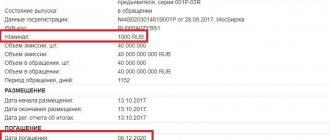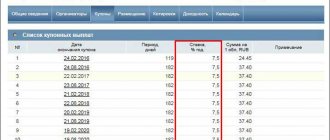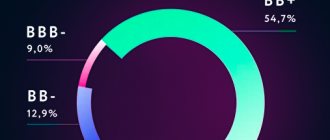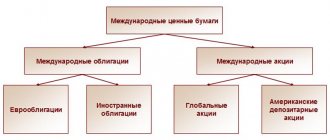A bond refers to a security issued by a company that needs financing. In simple words, the buyer lends money to the company. Bonds are divided into discount and coupon. Most of the securities on the Russian market are coupon-bearing. According to them, the issuer who sold the bonds additionally pays the owner the accumulated coupon income (ACI) at certain intervals. Let's figure out what the tax accreditation document is for sellers and buyers, and what is the mechanism for obtaining it.
What is NKD
The coupon rate on bonds is a parameter that implements the mechanism of interest charges and payments. The NKD allows the owner of the bonds to sell them before the maturity date. In this case, interest income is not lost.
This definition may not be clear without a visual illustration. Let's consider it. Conditional buyer N purchased a bond with a face value of 1 thousand rubles from seller M. It is known that its profitability is 20%, and payments occur every quarter (4 times). Hence:
- The coupon size is 200:4=50 rubles;
- frequency of payments – 365:4=91 days.
The accumulated coupon income is formed as a result of interest accrual.
Every three months, the owner of the paper will receive 50 rubles. After the next payment (50 rubles), the coupon is “reset to zero”. And throughout the entire period (91 days) there is a uniform accumulation. It turns out to be a kind of cyclicity - the end of one period falls on the beginning of the next.
It is important to understand how to find out the income tax if the end of the payment period has not yet arrived. They use a special formula. It shows the amount of coupon income at each fixed point in time.
It follows from this that the accumulated coupon does not have a constant value and depends on the period and on the number of days that have passed since the beginning or end date of this period. That is, changes in the NKD occur daily. For example, after a month and a half, the accumulated coupon in the example given will be 24 rubles 66 kopecks.
NKD is always less than the coupon size. The moment they become equal will mean the end of the accumulation period. The coupon income will be written off.
EAC is taken into account when issuing, as well as purchasing/selling a bond and is included in its price. That is, the security is more expensive by exactly the coupon rate.
From the example it follows that the price of one bond on the stock market will be equal to 1200 rubles. A similar cost calculation is used for all types of securities, both for Eurobonds and for domestic bonds (including corporate ones, for example, Sberbank, Gazprombank, B&N Bank, etc.).
NKD and taxes
Currently, income from the sale of bonds is exempt from taxation if the securities meet the following requirements:
- income instruments are issued by companies in our country controlled by the Ministry of Finance;
- the bonus interest should not exceed the refinancing rate by more than five percent. The rate that was set on the day of payment of the asset is taken into account. If the amount is exceeded, a tax of 30-35 percent will be charged on it;
- the bond was issued after 2021.
Tax payment has the following characteristics:
- Russian companies are subject to thirteen percent taxation, regardless of the currency in which they are sold.
- If bonds of American companies were purchased, a ten percent tax will be automatically written off in favor of the issuing country. The citizen himself will have to pay an additional three percent tax in favor of our country. The main thing is to fill out the declaration to avoid double taxation.
From 2021, tax breaks are planned to be abolished. In March of this year, amendments to tax legislation were adopted regarding the collection of taxes on citizens' income from investments.
NCD from the buyer's side
The conditional broker bought 10 bonds on the exchange. The nominal value of each of them is 1000 rubles, the frequency of payments is 3 months. The purchase occurs when 2 months have passed since the beginning of the coupon period. Calculation:
- total purchase amount – 10* (1000 rubles + tax accrual for 2 months);
- owner's income – return of 100% of the cost of paper + accrued income for 2 months;
- buyer's profit – accumulated coupon income on bonds for 1 month.
For each of the parties to the transaction, the calculation will be made differently
That is, the broker, when purchasing bonds, compensates their owner for accumulative income for 2 months. He himself receives from the issuing organization the full value of the asset upon expiration of the specified period. That is, his profit will be NKD for the month that the bonds were actually in his hands.
“Dirty” and “clean” bond prices
So, the accumulated coupon income is a certain amount that is accrued on the body of the bond. The final value of a bond on the stock exchange is determined as the market price (not to be confused with the face value - it is fixed, and the price of the bond fluctuates depending on supply and demand) plus the income tax.
Thus, the market price of a bond is called “clean”, and the market price together with the NKD is called “dirty”. The dynamics of the net price are displayed in a graph and measured as a percentage of the nominal value. For example, if the par value is 1,000 rubles, and the “net” price of the bond is 103.2%, then such a bond costs 1,032 rubles.
The “dirty” price (i.e., market price + NKD) is the amount you will pay when buying a bond and receive when selling it. This is what is most often displayed in the interface of the broker’s mobile application. Quik, on the other hand, can be configured to display “clean” or “dirty” prices depending on your needs.
So, if in our example the NKD was, say, rubles, then the total amount for the purchase will be 1032 + 5 = 1037 rubles. Add to this the broker's commission and you get the final price you will pay to buy the bond.
NCD from the seller
The conditional owner sold 5 securities on the secondary market and gave a price for them of 1000 rubles. Payment frequency is 3 months. The sale occurs when only 1 month has passed. from the beginning of the coupon period. The buyer pays 100% of the cost + savings coupon for 1 month. for each bond.
Calculation:
- total expense – 5* (RUB 1000 + accrual tax for 1 month);
- the seller’s income is the return of the par value of the coupon bond + cash income for 1 month;
- buyer's profit - accumulated income for 2 months.
When selling, the owner not only returns the money spent on purchasing bonds on the primary market, but also receives the income tax for the current period that the securities were in his portfolio, i.e., for 1 month.
In such calculations, for both parties there is not only reliability, but also fairness of the transaction.
Taxation of NKD
In accordance with the latest amendments to the legislation, from 2021, accumulated coupon income, as well as coupons and income from exchange rate differences, is taxed at a rate of 13%. Until the end of 2021, NKD and coupons on OFZ and municipal bonds were not taken into account as a taxable base.
At the same time, the NKD paid when purchasing a bond can be used as an expense to reduce the tax base.
Thus, if you buy a bond and pay the NKD (along with the “clean” price), and then sell the bond and receive the NKD (along with the “clean” price), then from the “dirty” sale price you simply subtract the “dirty” purchase price ( i.e. the cost of purchasing a bond).
In fact, the broker himself performs all calculations and withholds tax either immediately, or upon withdrawal of funds, or at the end of the year.
Thus, the accumulated coupon income is the portion of the bond's coupon that is accrued daily on the debt security and is "posted" along with the market price of the bond. The buyer must pay the NKD to the seller. The presence of an NKD makes it possible to ensure liquidity of the bond. It is better to find out the size of the tax accrual in advance in order to plan the exact amount of the purchase. From 2021, NKD is taxed at a rate of 13%. That's all, good luck, and may the money be with you!
Rate this article
[Total votes: 1 Average rating: 5]
How is NKD calculated?
You can calculate the savings coupon using a simple method. To convert profitability to a specific accrual income, a standard formula is used:
NKD=N*(C/100)*T/B, where
N – nominal value.
C – interest rate.
T – number of days that have passed since the beginning of the coupon period.
B – calculation base (can be 365 or 366 days).
Certain formulas are used for calculations
For example, there is an issue and purchase of a bond with a face value of 1 thousand rubles, the yield of which is 20%, and coupon payments occur 4 times a year (every quarter). The accumulated coupon on the 30th day of a non-leap year is calculated as follows:
NKD = 1000 *(20/100)*30/365 = 16 rubles. 44kop.
Payments are made in rubles.
There is another method of calculation; some investors often use it. The size of the accrual variable is set for each day, and only then multiplied by the number of days.
Let's look at how to calculate the coupon yield on bonds when the value of the bond is more or less than 100% of the face value, using specific example problems.
The conditional investor purchased a short-term bond (1 year) for 80% of the par value (a certain discount discount) with a 20% coupon. At the end of the year, he will receive a yield to maturity of 40% (20% is the coupon, 20% is the difference in cost). If he does not wait for the maturity date, then upon sale he will receive only a 20% coupon yield.
The conditional broker bought a paper with a face value of 110% with a 20% coupon. Therefore, the yield to maturity at the end of the term will be a difference of 10%. Sales before the end of the term will be paid from the actual accumulated coupon (20%).
How is NKD calculated?
A bond is a promissory note issued by an organization or government. The issuer borrows money and pays the debt holder a reward: a coupon. Coupon payments can occur at different intervals: once every six months, quarterly or even every month.
Every day a portion of the coupon is credited to the bond. Let, for example, the coupon rate be 36.5% (fantastic at current rates, but let it be) and it is paid once a year. If the par value of the bond is 1000 rubles, then the issuer annually pays 365 rubles to the holder of the paper. Consequently, 1 ruble “drips” onto the bond every day, i.e. its “internal” value increases by 1 ruble. This is the NKD.
If someone wants to buy this bond, say, not on the coupon payment day, then he will have to pay the previous owner everything that has accumulated. For example, if he buys a bond on the 120th day, he must pay the market price (let the bond trade at par) plus the accumulated coupon income, i.e. 1120 rubles.
If he then decides to sell it, for example, on the 250th day, then he sells it for 1,250 rubles, and someone else, accordingly, buys this bond for 1,250 rubles. Then he waits for the coupon to be paid and receives his 365 rubles. We minus the income tax and get a net profit of 115 rubles.
It turns out that the first bond holder received 120 rubles, the second - 130, and the third - 115 rubles, and all together - 365 rubles.
If the NKD did not exist, then all bonds would be completely illiquid and would trade exclusively on the coupon payment day.
Imagine that you bought a bond for 1,000 rubles and six months later sold it for the same 1,000 rubles (that is, for six months the money lay dead weight), and the one who bought it from you received the entire coupon. Do you agree, it's unfair?
And here’s another interesting article: What is a structured bond, how and why should private investors buy it?
Thus, the NKD restores fairness and helps maintain market liquidity of the bond.
How to find out the size of the income tax before buying a bond
It is clear that no one calculates NKD manually; for this purpose, automatic programs and calculators are used on special sites.
You can find out the NCD of a bond in circulation in two ways:
- On the website rusbonds.ru. To view the NKD, you need to select the “bond search” section and find the one you are looking for. Next, click on the “general information” column. At the bottom of the list is the NDC of one of the government savings loan securities (OGSS) - this is the value of the bond’s coupon.
- In the QUIK trading terminal - a special program designed for quick access to stock trading from a mobile gadget or other device. That is, you need to install a mobile application. NKD is calculated here on a daily basis. Its size is listed in a separate column for convenient use. NKD on the listed resources are posted online.
You can check the NKD in various ways








